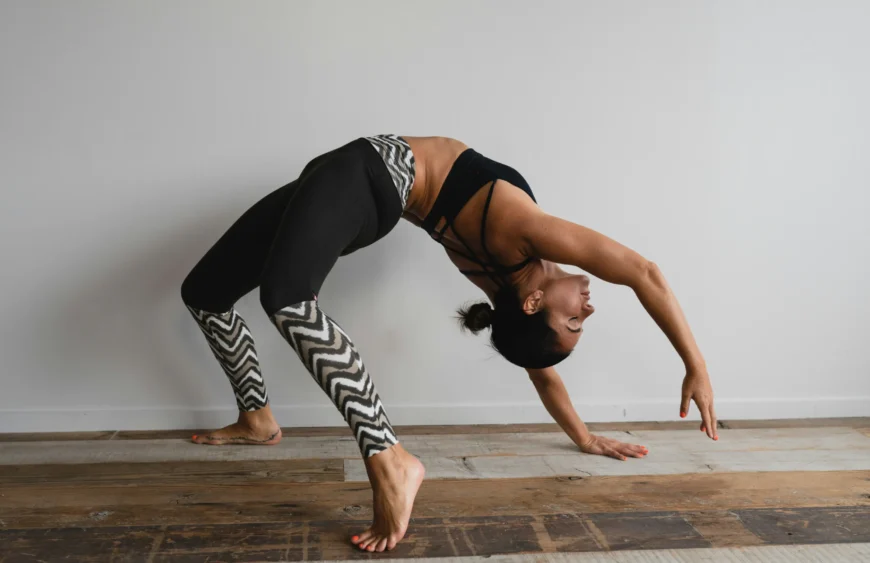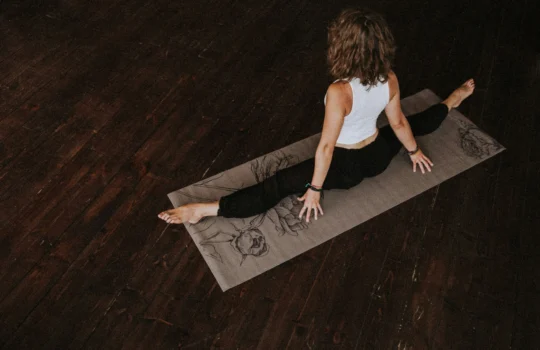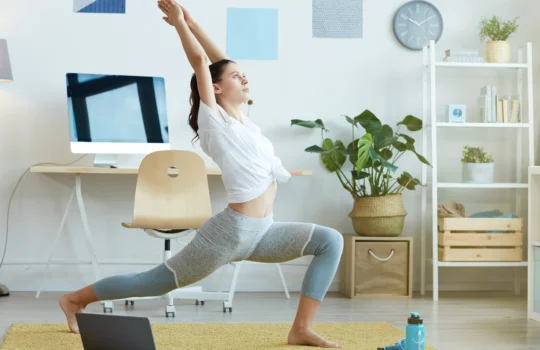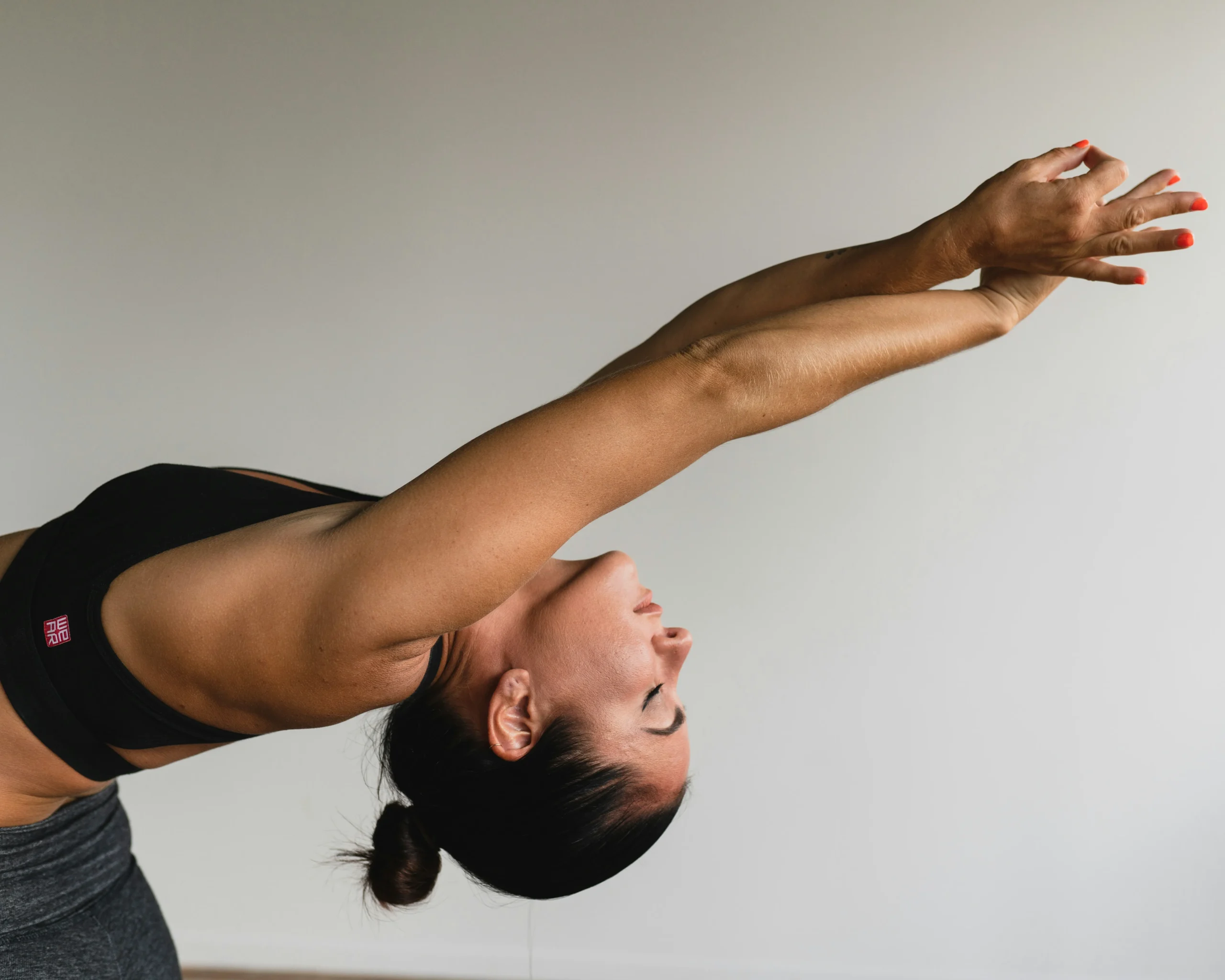Welcome to the world of Bikram Yoga, a transformative practice that has captivated fitness enthusiasts around the globe! Whether you’re looking to enhance your physical flexibility, boost your mental wellness, or simply embark on a new fitness journey,
Bikram Yoga offers a comprehensive approach to improving your health. In this guide, we’ll explore what Bikram Yoga is, how to prepare for your first class, and provide essential tips that every beginner should know. So, roll out your mat, grab a bottle of water, and get ready to dive into the heat and heart of Bikram Yoga!
Table of Contents
What is Bikram Yoga?
Bikram Yoga, often referred to as hot yoga, is a systematic practice of yoga that has become popular for its intense physical and mental benefits. Developed by Bikram Choudhury in the 1970s, this style consists of a series of 26 postures (asanas) and two breathing exercises (pranayamas), performed over 90 minutes in a room heated to approximately 105°F with 40% humidity. This heated environment helps to warm up the body quickly, making the muscles more elastic and less susceptible to injuries while also promoting heavy sweating, which is believed to help flush toxins from the body.
The 26 postures are designed to systematically work every part of the body, ensuring that all internal organs, veins, ligaments, and muscles get the optimal benefit. From improving circulation and flexibility to enhancing muscle tone and mental focus, Bikram Yoga offers a full-body workout that promotes both physical and mental health. Check out 26 yoga poses of Bikram yoga!
Besides the beneficial style of Bikram Yoga, we cannot overlook another aspect of Bikram Choudhury’s reputation—his disturbing and abusive actions towards his followers. Netflix features an enlightening documentary titled ‘Bikram: Yogi, Guru, Predator‘ that delves into these issues. It’s important not to let these unfortunate events bias our view of the yoga itself. Since these revelations, many studios have rebranded Bikram Yoga as ‘Hot Yoga.’ Be aware of this significant distinction, and adopt only what you find beneficial for your health.
Preparing for Your First Bikram Yoga Class
Embarking on your first Bikram Yoga class can be exciting but also a bit daunting. Here’s how you can prepare:
What to Bring
To ensure you have the best possible experience, it’s important to come prepared:
- Yoga Mat: A non-slip yoga mat is crucial, as the heat can make surfaces slick. To find the best yoga mat, check out The Best Mat for Hot Yoga That Will Totally Transform Your Practice!
- Water: Staying hydrated is key, so bring a large bottle of water.
- Towel: Bring a towel (or two) to manage sweat and maintain grip.
- Comfortable Clothing: Wear breathable, form-fitting clothing that allows you to move freely and handle sweat.
Setting the Right Expectations
Understanding what to expect will help you feel more comfortable and less overwhelmed:
- Embrace the Heat: The room will be very hot, which can be challenging at first. Give yourself three to five classes to acclimatize.
- Pace Yourself: It’s normal to feel dizzy or nauseous during your first few sessions; take breaks as needed.
- Community Support: Remember, everyone in the room was once a beginner too. Bikram Yoga communities are supportive and welcoming.
In the next sections, we’ll cover essential tips to make your Bikram Yoga journey a success, address common mistakes, and delve into the profound benefits you can expect from regular practice. Stay tuned!
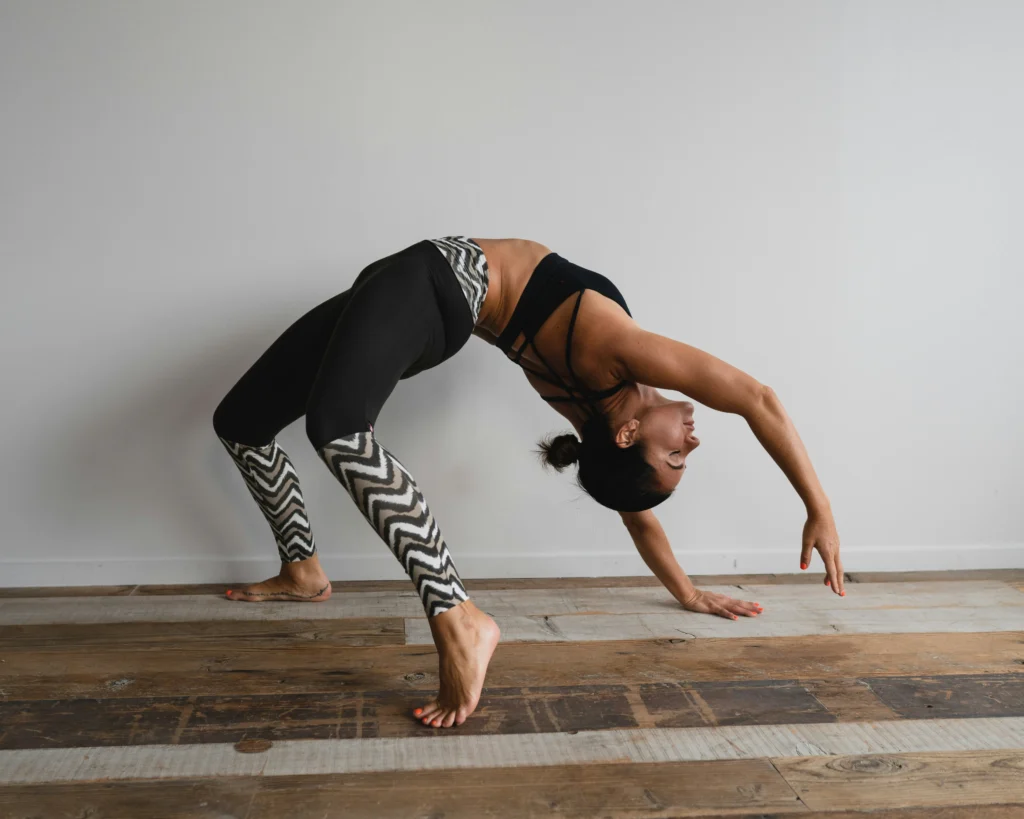
5 Essential Tips for Bikram Yoga Beginners
Bikram Yoga can be as challenging as it is rewarding. Here are five essential tips to help beginners navigate their early experiences and set the foundation for a successful practice:
1. Stay Hydrated
Hydration is crucial in Bikram Yoga due to the intense heat and sweating involved. Drink plenty of water throughout the day before your class, and bring a large water bottle to keep hydrated during the session. Avoid drinking too much right before class to prevent feeling bloated.
2. Listen to Your Body
While it’s common to feel a push to perform each pose perfectly, it’s vital to listen to your body and respect its limits. If you feel extreme discomfort or pain, ease back and take a less intense posture. Over time, your flexibility and strength will improve.
3. Master the Breathing
Bikram Yoga places a strong emphasis on breathing techniques, which can help control your body temperature and calm your mind. Focus on deep, steady breaths throughout the class to maximize your performance and endurance.
4. Focus on Alignment, Not Depth
Proper form in each pose is more beneficial than how deep you can go into the pose. Pay attention to your alignment to get the full benefit of each posture and avoid injuries.
5. Consistency is Key
Bikram Yoga becomes more enjoyable and less of a physical shock to your system as you attend more classes. Try to attend classes regularly—aim for at least three times a week—to truly start to see and feel the benefits.
Common Mistakes in Bikram Yoga and How to Avoid Them
Even the most dedicated Bikram practitioners can find themselves making some common mistakes. Here’s how to avoid them:
Ignoring the Heat
Many newcomers underestimate the challenge posed by the heat. Acclimate by arriving early to get used to the temperature, and if you feel overwhelmed, it’s okay to sit down and take a break.
Comparing Yourself to Others
It can be easy to compare your progress or flexibility to others in the class. Remember, every body is unique, and everyone has different strengths and limitations. Focus on your own journey and celebrate your personal improvements.
Skipping the Cool Down
After class, take time to cool down properly and allow your heart rate to return to normal gradually. This helps in muscle recovery and prepares your body for the rest of your day.
Benefits of Bikram Yoga
Practicing Bikram Yoga regularly can offer a wide array of benefits that impact both the body and mind:
Physical Benefits
- Enhanced Flexibility: The heat helps muscles relax and become more elastic, which can significantly increase your flexibility.
- Increased Strength: Regular practice strengthens muscles and joints, improving overall body strength.
- Weight Management: Bikram Yoga can burn between 500 to 1000 calories per session, aiding in weight loss and maintenance.
Mental and Emotional Benefits
- Stress Reduction: The intense focus required during Bikram Yoga helps distract from daily stresses and mental clutter.
- Improved Focus and Discipline: The challenging nature of Bikram Yoga enhances personal discipline and focus in everyday life.
- Greater Emotional Balance: The physical exertion combined with heat promotes the release of endorphins, boosting mood and creating a sense of well-being.
By embracing these tips and understanding the common pitfalls, you can maximize your Bikram Yoga experience and enjoy the numerous benefits it offers. Whether you’re looking to improve your physical health, mental clarity, or emotional stability, Bikram Yoga provides a comprehensive solution that challenges and rewards in equal measure.
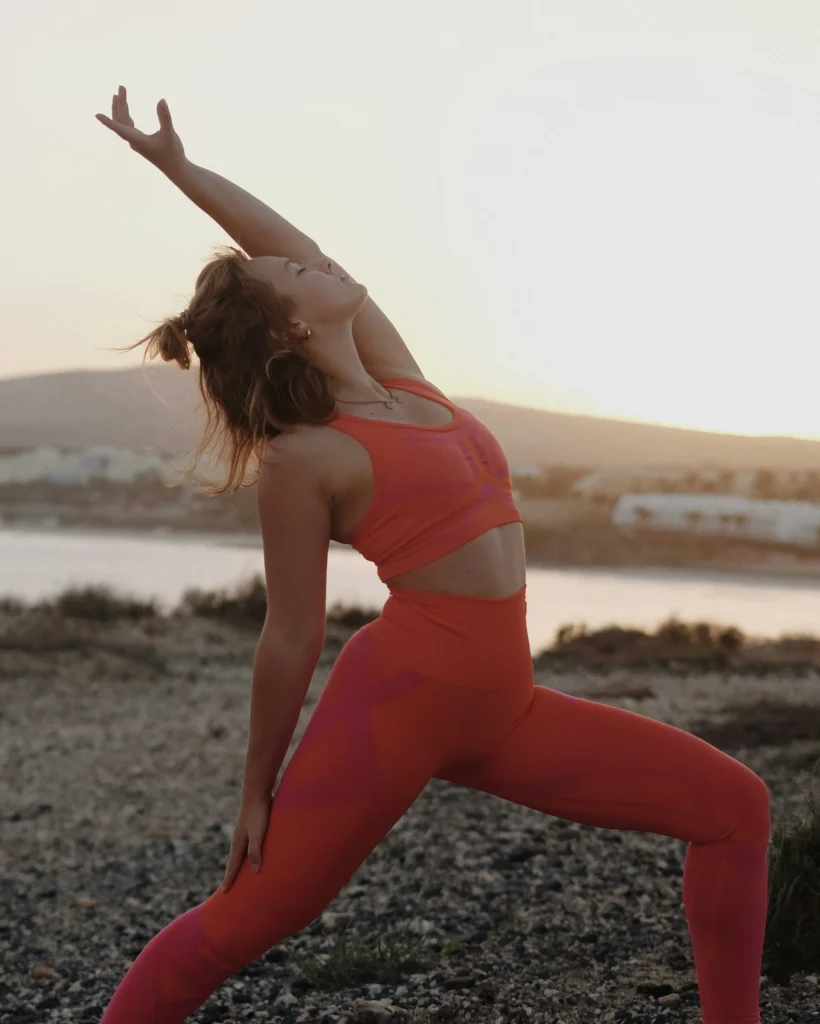
Comparing Bikram Yoga with Other Styles of Yoga
Bikram Yoga is just one of many yoga styles available, each with its unique focus and benefits. Understanding how Bikram compares to other styles can help you make an informed decision about which practice might suit you best:
Vinyasa Yoga
- Flow and Movement: Unlike the static poses of Bikram Yoga, Vinyasa is characterized by a flowing sequence of movements synchronized with breath.
- Temperature: Vinyasa classes are typically not heated, offering a less intense environment temperature-wise compared to the consistent heat of Bikram Yoga.
Hatha Yoga
- Pace: Hatha Yoga is generally slower and more gentle than Bikram, focusing on individual poses and maintaining them for several breaths.
- Flexibility in Temperature: Hatha Yoga does not require a heated environment, making it more accessible for those sensitive to heat.
Ashtanga Yoga
- Structured Series: Like Bikram, Ashtanga follows a specific sequence of poses, but it includes a wider variety of movements and postures.
- Self-Paced: Ashtanga can be practiced at one’s own pace, unlike the instructor-led Bikram sessions.
Each style has its strengths, and the best choice depends on your personal fitness goals, health conditions, and preferences. Bikram Yoga offers a rigorous, disciplined approach with a strong emphasis on detoxification and physical challenge, suitable for those who thrive in structured environments and high heat.
Conclusion of Bikram Yoga
Bikram Yoga is more than just a physical workout; it’s a comprehensive mind and body practice that offers profound benefits in stress reduction, physical health, and mental clarity. By following the tips and guidelines outlined in this article, beginners can safely embark on their Bikram Yoga journey, ready to explore the transformative power of this intense yet rewarding practice.
Ready to change!
Are you ready to turn up the heat and transform your life with Bikram Yoga? Whether you’re a seasoned yogi or a curious newcomer, we’d love to hear about your experiences or any questions you might have. Share your thoughts in the comments below, and join the vibrant community of Bikram Yoga practitioners today! Don’t forget to share this guide with friends who might also be interested in exploring the hot, healing world of Bikram Yoga.

